7 Types of Logos
Although all logos are a combination of images and typography, each type has its own unique flavor. There are seven main categories of logos, each with its own distinct characteristics:
- Emblems
- Pictorial marks (or logo symbols)
- Wordmarks (or logotypes)
- Monogram logos (or lettermarks)
- Abstract logo marks
- Mascot logos
- Combination marks
Let’s take a look at each category.
1. Emblems
These logos feature text inside a symbol or an icon. They are often used by schools, government agencies, and sports teams.

Advantages of emblem logos:
- Memorability: These logos are often easy to remember and recognize, making them a great choice for companies that want to create a strong visual identity.
- Traditional feel: Emblem logos can give your brand a traditional and classic feel, which can be especially useful for companies that want to convey a sense of history or heritage.
- Official look: Emblem logos can also give your brand an official and authoritative look, which can be useful for companies that want to convey a sense of professionalism and trustworthiness.
Disadvantages of emblem logos:
- Drawbacks: These logos may not look as good when resized to a smaller resolution, and they can be difficult to read when placed on a billboard.
- Limitations: While emblem logos can be memorable and give your brand a traditional feel, they may not be the best choice if you need to resize your logo or display it on a large billboard.
- Challenges: Emblem logos can be difficult to read when they are displayed at a smaller size, and they may not be as effective as other types of logos when they are displayed on a large billboard.
These logos are a popular choice for organizations, universities, government agencies, and other entities that want to convey a sense of tradition and heritage. They are often easy to remember and recognize, making them a great choice for companies that want to create a strong visual identity. However, emblem logos may not be the best choice if you need to resize your logo or display it on a large billboard. Companies like Ford and BMW use emblem logos to create a sense of history and prestige, but some companies have decided to modernize the traditional emblem look with entirely new or updated logo designs that are more appropriate for the 21st century. For instance, KIA recently updated its logo from an emblem logo to a Wordmark logo. The new logo features a handwritten signature style, which is more modern and sophisticated than the previous design.

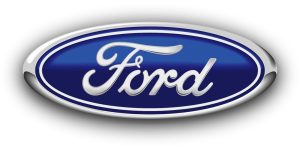
2. Pictorial marks (or logo symbols)
These logos are made up of a graphic or an icon that represents the brand. They are often used by companies that want to create a strong visual identity.
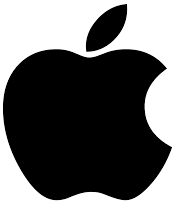
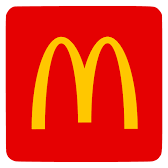
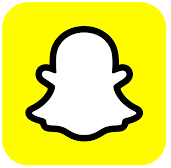

Advantages of pictorial marks:
- They can convey ideas through a symbol, which can be more memorable than a wordmark.
- If the brand is popular, the pictorial mark can be easily recognizable.
- Pictorial marks are scalable, especially if you opt for a vector logo design.
Disadvantages of pictorial marks:
- May not be the best option if your brand does not have strong recognition
If you want your audience to associate your brand with this type of logo design, the logo design does not have to be a literal representation of your business identity. However, it still needs to include distinctive symbols that you can use as visual representations of your brand.
As mentioned earlier, popular brands such as Starbucks have changed their logo from an emblem to a symbol once they were established on the market.
If you’re starting out, you can still use this type of logo. However, you’ll also need to use a wordmark associated with the symbol until your broad audience becomes familiar with your brand and what you offer. Once you reach the point where the symbol of your logo is recognizable enough that you don’t need the wordmark, you can follow Starbucks’ example and remove it.
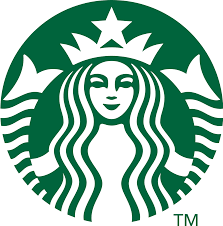
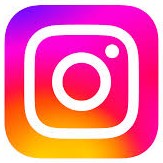
3. Wordmarks (or logotypes)
These logos are made up of text only. They are often used by companies that have a unique name or a strong brand identity.


Advantages of wordmarks:
- They are simple and easy to remember.
- They can be easily mixed with other design elements.
- They are easily recognizable.
- They are perfect for new businesses.
Disadvantages of wordmarks:
- They work best when the business name is short and distinctive, and sticks in the mind of potential customers.
- You may need to update the font to keep up with new trends
Wordmark logos are a powerful type of logo design that are made up of the company’s name. Unlike other types of logos, you won’t find symbols, graphic patterns, or emblems in a logotype. The main feature of the logotype design is its typography.
The whole identity of your brand will be created by the style and color of your fonts. That is why it is crucial to find typography that works well for you and represents your brand very well. Then you can select a color or several colors that represent the feel of your brand.
Some examples of wordmark logos include Coca-Cola, Disney, Google, Subway, and Jeep.
This type of logo is perfect if you are just starting out and unsure what symbol would best represent you. Moreover, having your brand’s name as a logo will get your brand’s name out there and help people make the connection to your brand immediately.

4. Monogram logos (or lettermarks)
These logos are made up of the initials of the company name. They are often used by companies that have long names or difficult-to-pronounce names.

Advantages of monograms:
- Acronym creation: Monogram logos are perfect for brands with multiple names that can be used to create an acronym.
- Professional appearance: Monogram logos look professional and can help establish a brand’s identity.
- Easy recognition: Monogram logos are easy to recognize and can help customers remember your brand.
- Scalability: Monogram logos are scalable if you choose the right font. This means that they can be resized without losing quality or clarity.
Disadvantages of monograms:
- New market recognition: Monogram logos can be hard to recognize if you are new to the market.
- Full name placement: You may need to place the full name beneath the monogram logo until it is safe to remove it.
When creating a monogram logo, it’s important to choose a custom typeface that is easy on the eyes and legible when scaled down. This is because the logo will be made only of an acronym.
Some famous brands that use lettermark logos include HBO, CNN, H&M, IBM, and the BBC.
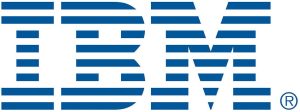
5. Abstract logo marks
These logos are made up of abstract shapes or designs. They are often used by companies that want to create a modern and sophisticated image.

Advantages of abstract logo marks:
- Uniqueness: Abstract logo marks are unique and can help establish a brand’s identity.
- Instant recognition: Abstract logo marks are instantly recognizable and can help customers remember your brand.
Disadvantages of abstract logo marks:
- New brand recognition: Abstract logo marks may not be the best type of logo for new brands as they can be difficult to comprehend if the connection with the business is too broad.
When creating an abstract logo, it’s important to choose a geometric form that can help you condense your brand into a single, distinctive appearance. Some famous companies and organizations that use abstract logo types include Pepsi, BP, Adidas, and the Olympics.
Your abstract logo mark should convey a particular message and represent your brand. You should also keep an eye on the colors you use, as they can also help make the design even more memorable.
If your business or product is new on the market, it can be risky to use this type of logo to represent you because you will first need to have a solid base of people who recognize your brand.

6. Mascot logos
These logos feature a character or an animal that represents the brand. They are often used by sports teams and companies that want to create a fun and playful image.
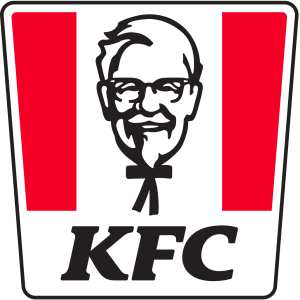
Advantages of mascot logos:
- Fun and friendly vibe: Mascot logos evoke a fun and friendly vibe that can help establish an emotional connection with your customers.
- Easy recognition: Mascot logos are easy to recognize and can help customers remember your brand.
Disadvantages of mascot logos:
- Character renewal: Mascot logos can be hard to renew and change the character.
- Professional message: Mascot logos may not be the best choice for brands that aim to send a professional message.
When considering mascots, is your immediate association with sports events? Mascots at sporting gatherings add an enjoyable visual element, fostering a lively atmosphere that engages the audience.
Similarly, mascot logos convey a comparable atmosphere with positive connotations. They feature an illustrated character, whether real, imaginary, or non-human. Typically, vibrant and amusing, mascot logos elicit a sense of warmth, fostering a stronger connection to the brand by appealing to people through the character representing the company.
These types of logos are commonly employed by sports teams, beverage companies, and food brands. Notable examples include KFC, Pringles, Wendy’s, and Cheetos, each recognized for their iconic mascots.


7. Combination marks
These logos are a combination of text and a symbol or an icon. They are often used by companies that want to create a strong visual identity while also highlighting their name.

Advantages of combination mark logos:
- Ideal for startup ventures
- Easily customizable over the long term
- Provides the freedom to unleash your creativity to the fullest
Disadvantages of combination mark logos:
- The design can appear cluttered when integrating multiple logo types.
Concerned about potential confusion or difficulty in recognition when using a symbol in your logo? Consider seamlessly integrating the symbol with abstract symbols, words, or acronyms. You can also explore combinations involving typography or wordmarks, experimenting with various logo types until you find a compelling version that aligns with your brand identity. Notable examples of combination mark logos include Domino’s Pizza, Taco Bell, Pizza Hut, Puma, and Adobe.
If uncertainty persists regarding the initial six logo types mentioned, opting for a combination of logos is a recommended approach. Regardless of your choice, invest time in research to ensure that your concept is unique and not reminiscent of any existing brand.

Conclusion
Now that you know how every type of logo is used and what are the advantages and disadvantages of each one, you can think about what you want for your business, based on the identity you want to give to your company.
Whether you don’t know where to start or you have a clear image of what you’d like your logo to look like, don’t hesitate to contact us, so we can start building your brands identity.
